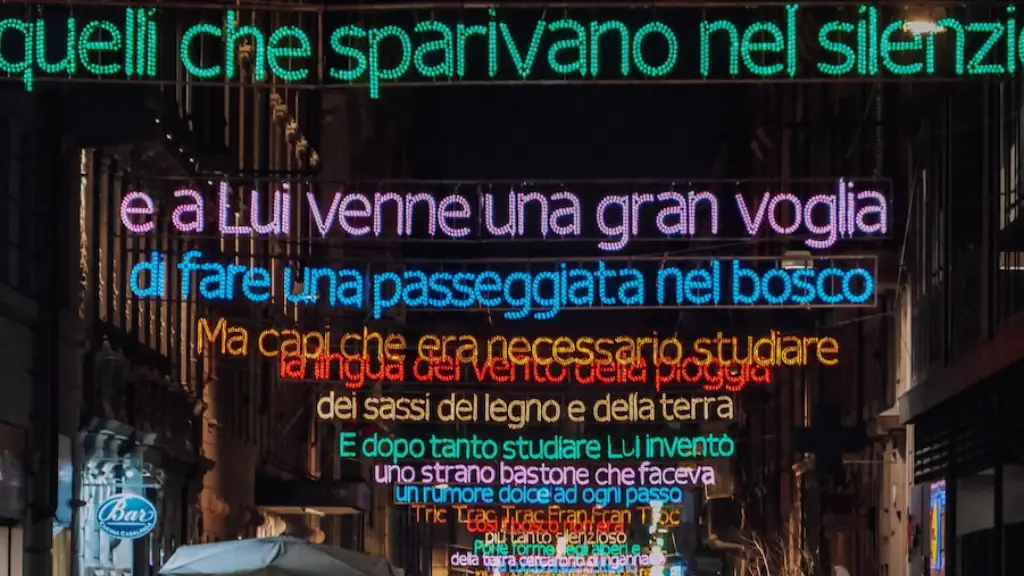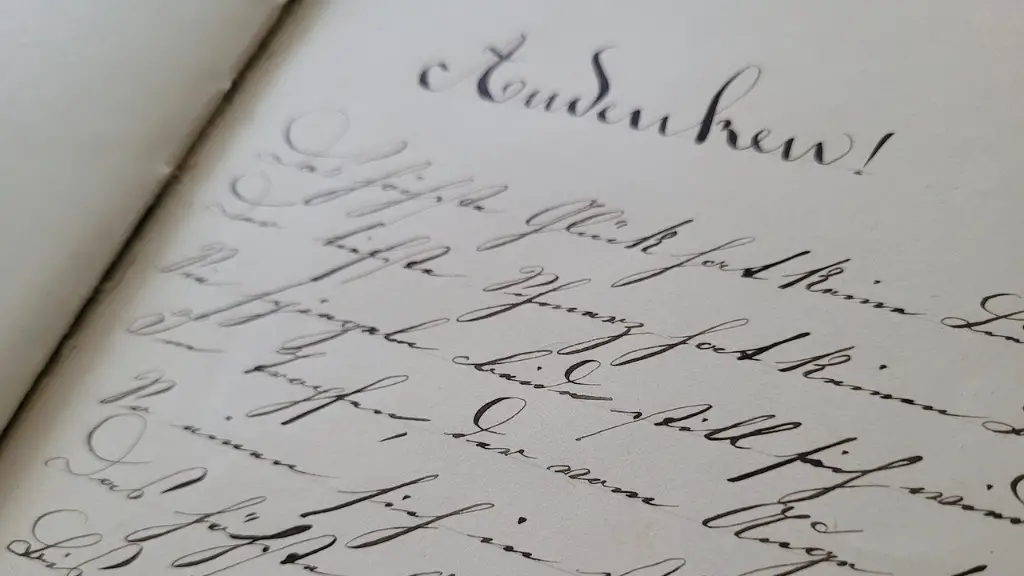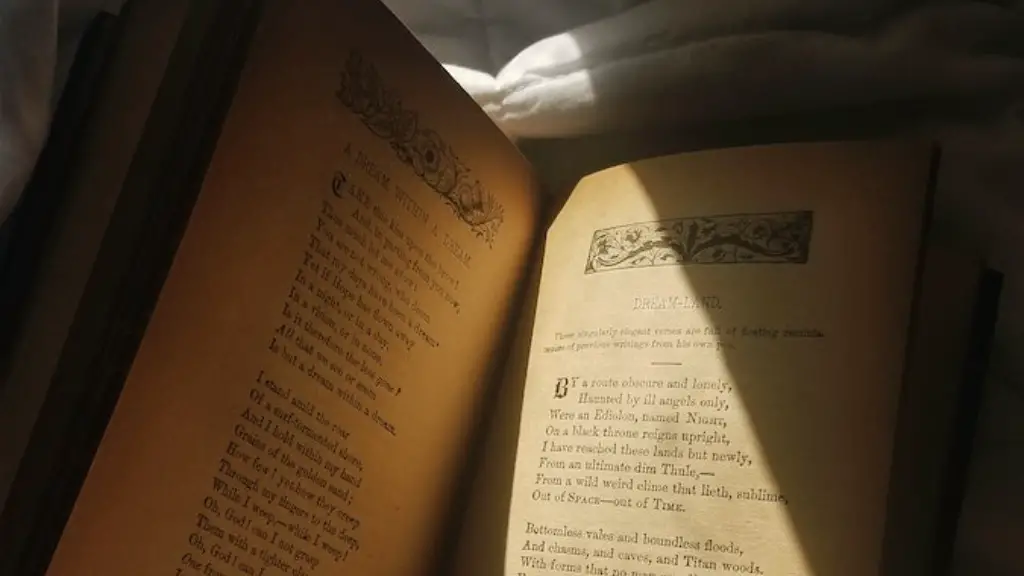What Makes Poetry Poetry
Writing a poem is a very different skill-set than that of creating a prose work. Poetry is an ancient art form that expresses much more than the text alone. The structure, the language and the emotions that a poem evokes go far beyond that of prose. Let’s take a deeper look at what makes poetry poetry.
Many poems are written in versification. Versification is the art of putting together words, lines and entire poems that have a set meter and rhyme scheme. Different types of meters and rhyme schemes have been developed over the centuries that contribute to the tone and mood of a poem. The meter and rhyme of a poem can range from the very complex to the simple, but done well it is a very powerful tool to invoke emotion in the reader.
In addition to the meter, poems take advantage of the rhythm and cadence of language. A skilled poet knows how to manipulate the language of a poem in order to create a specific rhythm. This rhythm can often be used to draw attention to certain words or phrases in a poem, which can be very powerful in conveying a message or emotion.
Poetry also has a long tradition of using symbolism and metaphor to convey an idea or emotion. It is through these metaphors and symbols that poetry can evoke very powerful emotions in the reader. For example, a poem can use a metaphor to evoke a feeling of loss or longing, which is something that can be difficult to do in prose.
Lastly, poetry is often seen as an art form that is more about self-expression than about communication. It is a way for a writer to express themselves and their feelings in a creative way. Poems often allow writers to express emotions that would not be possible with a simple declaration of fact or opinion.
Metaphor and Symbolism
Metaphor and symbolism are two of the most powerful tools that poets have at their disposal when crafting their work. A metaphor is a comparison between two unrelated things, which help the reader to understand a concept more clearly. Metaphors help to convey meanings and ideas in a way that would be difficult if it was simply stated in a prose work. Symbols, on the other hand, are a representation of something bigger than themselves. Symbols such as nature, time and love are often used in poems to express or evoke emotions and ideas.
The use of metaphors and symbols can be especially powerful when a writer uses them to parallel some personal experience of the reader. This connection can be a powerful experience, drawing the reader into the poem and making them feel a personal connection to the work. A skilled poet knows how to use metaphor and symbolism to create this kind of personal connection with the reader.
One example of a poem that uses metaphor and symbolism is Robert Frost’s “The Road Not Taken”. In this poem, Frost uses the two roads in the poem as symbols for two possible paths in life, and how the path chosen can have an impact on the future. The poem could also be seen as a metaphor for the choices that people make in life, and how in the end all choices are meaningful.
Language and Structure
Most of the meaning in poetic works comes from the use of language and structure. Experienced poets know when and how to use the right words to evoke emotion or convey a message. Poems, while often shorter than novels, can still be very powerful in their use of language. Written in verse or in a loose, free-form style, a poem can have a very distinct rhythm that allows the poet to convey a unique message through the use of specific words or phrases.
In regards to structure, there are many different types and forms that poets can use. There are traditional forms such as the sonnet or haiku, or they can choose to use a more experimental form, like those found in modern poetry. The structure of a poem can also be used to symbolize certain ideas or emotions. For instance, the way a poem is laid out can be used to represent feelings of loneliness or confusion.
One example of a poet who used structure to great effect is Walt Whitman. Whitman wrote in an unstructured, free-flowing style that used repeating phrases and cadence to create a sense of movement. This served as an effective method for forming a sense of unity with his words and conveying his message.
Purpose and Emotion
Poetry is often seen as a form of self-expression, as it allows the writer to portray their emotions in a way that can be difficult if done through prose. Emotions are very powerful and can evoke strong reactions in a reader. Poets can make use of this by using language and structure to create an emotional response in their readers.
In addition to emotion, a poem also serves a purpose. Poetry is not just about conveying emotion, but also communicating a message. A poem can be used to express love, anger, joy, sorrow or any other emotion, but sometimes it can also be used to communicate an important idea or concept. A poet is often trying to get the reader to think about something more deeply, on a level that is more complex than the simple declaration of an opinion.
An excellent example of a poem that serves a purpose is Langston Hughes’ “Dreams”. In this poem, Hughes uses imagery and language to express his frustration with the limitations of the time period in which he lived. He uses metaphor and symbolism to present a dream of freedom and to make his audience think about the reality of their situation.
The Uniqueness of Poetry
Poetry is a unique art form that is distinguished from prose work by its use of language, structure, metaphor and symbolism. While a prose work may convey a clear message or opinion, a poem can evoke strong emotions and convey complex ideas. With its focus on emotion and purpose, poetry is a powerful way to communicate ideas in ways that can be difficult to achieve with prose.
Poetry can also be used to explore personal experiences and the writer’s innermost thoughts and feelings. The ability to express oneself in a creative manner is one of the main reasons why people write and enjoy poetry. Whether it is to evoke emotion or convey a message or concept, poetry can be a powerful way to express oneself in a unique and meaningful way.
Style and Technique
A great poet understands the power of words and how to use them to effectively communicate a message. A poet’s style and technique, however, is what sets them apart. There are many different poetic styles and techniques, from the traditional to the experimental, but they all share the common goal of evoking emotion and conveying a message. Some poets use a particular type of meter or rhyme, while others prefer a more free-flowing style. No matter what the style or technique, a poet must understand how to use language effectively in order to create powerful and meaningful works.
One example of a poet who used a unique style and technique is William Wordsworth. Wordsworth often wrote in a nebulous, free-flowing style, eschewing traditional forms such as meter and rhyme. His use of language and imagery often focused on nature and his innermost thoughts, setting him apart from other writers of his time.
The Power of Poetry
Poetry has a unique ability to evoke emotion and convey complex ideas. Through the use of language, structure, metaphors and symbols, a skilled poet can create a powerful and meaningful work of art. Poetry is not just about emotion, however, it can also be used to communicate an idea or concept to the reader. Whether it is to inspire emotion or thought, poetry can be a powerful tool for self-expression and communication.
Over time, the power of poetry has been celebrated and embraced by millions of people. From ancient times to modern day, poetry has been a treasured way for writers to express themselves and convey their ideas to the world. It is this power that continues to make poetry a timeless and powerful art form.





